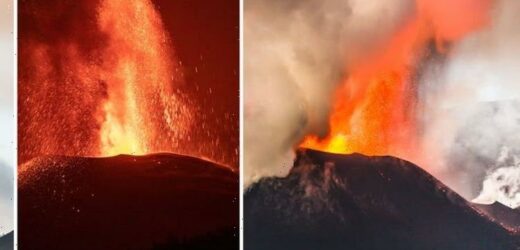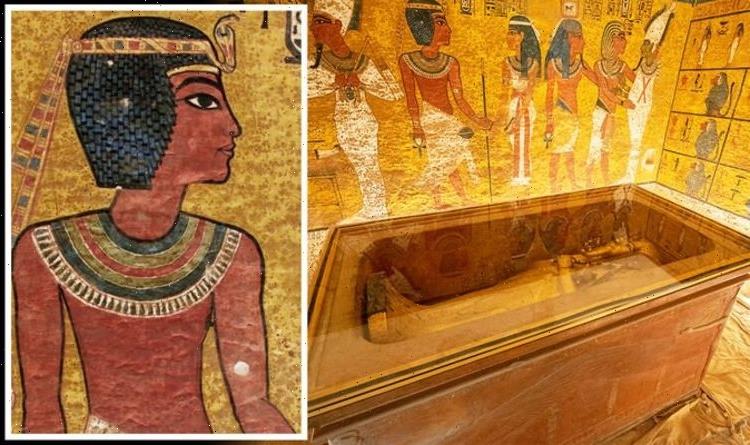La Palma: Volcano erupts and lava flows on Spanish island
We use your sign-up to provide content in ways you’ve consented to and to improve our understanding of you. This may include adverts from us and 3rd parties based on our understanding. You can unsubscribe at any time. More info
The Canary Islands Volcanology Institute (INVOLCAN) clocked the flows of molten rock at speeds of up to 10 metres per second. According to the agency, these are some of the fastest lava flows volcanologists have ever seen on the island. The update arrives on the 66th day of the eruption, which has displaced thousands of people, destroyed homes and wiped out entire fields and crops.
The lava flows are presently feeding a new lava delta near the town of Tazacorte on the island’s western coast.
Lava deltas form along coastal areas when large quantities of volcanic material flow into a body of water, forming a new stretch of land.
The newest delta started forming on Monday when a stream of lava crashed into the ocean, prompting authorities to confine some 3,000 local residents.
The new delta formed just 1.2 miles from another delta that developed on the coast in late September.


According to INVOLCAN, the responsible lava flow has been streaming towards the coast past the mountain of La Laguna.
On Tuesday, the agency shared a number of videos of the stream to Twitter.
One clip was captioned: “The lava flow continues its unstoppable advance in the surroundings of La Laguna mountain.”
In another video, a lava flow can be seen moving through a burning banana plantation.
And a third clip showcases clouds of billowing steam rising from the sea where lava made contact with the water.
At a steady speed of 10 metres per second – about 22mph – the lava could travel the distance from Cumbre Vieja’s cone to the cliffs of Tazacorte in about 10 minutes.
The Cumbre Vieja volcano has been erupting since September 19, casting the Canary Island into a state of chaos.
As of Tuesday, satellite data compiled by the European Copernicus Emergency Management Service indicate more than 2,670 buildings have been destroyed by the natural disaster.
The lava is also estimated to have covered a total of 1,074 hectares of land.


The island itself has grown by about 42 hectares as a direct result of lava flowing into the ocean and solidifying.
The eruption has also disrupted operations at La Palma airport, which was forced to shut down for five days due to volcanic ash.
Video clips shared on Twitter appear to show airport staff in hazmat suits and masks using leaf blowers to clear the airport’s runway.
Volcanic ash can be extremely dangerous to aircraft engines as it can clog up machinery, contaminate fuel systems or even melt down due to the heat and cover critical parts.
Last month it was revealed an official on La Palma’s neighbouring La Gomera island municipality argued in favour of bombing the island.
Casimiro Curbelo suggested further destruction to the islands could be prevented by using explosives to halt the lava flows.
Discussing his left-field idea, he said: “Maybe it’s madness, but I get the impression from a technological point of view that it should be tried.”
Additional reporting by Maria Ortega.
Source: Read Full Article


